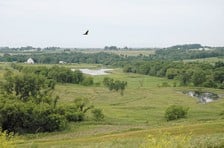Metro Waste landfill is a laboratory
Prairie grasses, wetlands and farm ground take up more ground than trash
.floatimg-left-hort { float:left; } .floatimg-left-caption-hort { float:left; margin-bottom:10px; width:300px; margin-right:10px; clear:left;} .floatimg-left-vert { float:left; margin-top:10px; margin-right:15px; width:200px;} .floatimg-left-caption-vert { float:left; margin-right:10px; margin-bottom:10px; font-size: 12px; width:200px;} .floatimg-right-hort { float:right; margin-top:10px; margin-left:10px; margin-bottom:10px; width: 300px;} .floatimg-right-caption-hort { float:left; margin-right:10px; margin-bottom:10px; width: 300px; font-size: 12px; } .floatimg-right-vert { float:right; margin-top:10px; margin-left:10px; margin-bottom:10px; width: 200px;} .floatimg-right-caption-vert { float:left; margin-right:10px; margin-bottom:10px; width: 200px; font-size: 12px; } .floatimgright-sidebar { float:right; margin-top:10px; margin-left:10px; margin-bottom:10px; width: 200px; border-top-style: double; border-top-color: black; border-bottom-style: double; border-bottom-color: black;} .floatimgright-sidebar p { line-height: 115%; text-indent: 10px; } .floatimgright-sidebar h4 { font-variant:small-caps; } .pullquote { float:right; margin-top:10px; margin-left:10px; margin-bottom:10px; width: 150px; background: url(http://www.dmbusinessdaily.com/DAILY/editorial/extras/closequote.gif) no-repeat bottom right !important ; line-height: 150%; font-size: 125%; border-top: 1px solid; border-bottom: 1px solid;} .floatvidleft { float:left; margin-bottom:10px; width:325px; margin-right:10px; clear:left;} .floatvidright { float:right; margin-bottom:10px; width:325px; margin-right:10px; clear:left;}
More than trash meets the eye at Metro Waste Authority’s landfill in eastern Polk County.
Of the landfill’s 1,800 acres, a mere 500 are devoted to trash. That situation can’t change for another 38 years, according to Metro Waste’s permit from the Iowa Department of Natural Resources.
The entire landscape serves as an ecology lab for high school students, with classes operating out of a converted farmstead on the south side of the grounds.
Southeast Polk High School students helped retrofit the brick farmhouse into two classrooms and a laboratory. Students study the flora and fauna under the guidance of Metro Waste Executive Director Tom Hadden, Southeast Polk teachers and Drake University professors.
Spreading across the landscape north of the ecology lab is a wetland, a project to introduce prairie grasses and wildflowers on 500 acres and 800 acres of crop ground that is leased under a crop-share arrangement. Last year, soybeans yielded 58 bushels to the acre and corn yielded 160 bushels. Switchgrass is cut and baled and used as forage for cattle.
In keeping with Metro Waste’s goal of setting an example of environmental responsibility, the crop ground is farmed with no-till practices, and the use of chemical fertilizers is kept to a minimum, said Metro Waste spokeswoman Amy Hock.
Hock admits that the landfill is a source of mystery to many Greater Des Moines residents whose trash winds up in its clay- and fabric-lined cells.
There were rumors that farmers were being thrown off their land when Metro Waste acquired the farmstead and crop ground.
“We’ve never forced anybody off their land,” she said.
All purchases were made at fair market prices negotiated with farmers who were willing to sell, Hock said.
Then there are the rumors about tax dollars being wasted on prairie plantings, possibly even the outdoor classroom that the agency provides for curious young scientists. The fact is that no tax dollars go into the operation of the landfill.
Metro Waste is so confident of its management philosophy that for the last two years, it has hosted its “Green Run” event at the landfill. The event, scheduled this year for Sept. 19, consists of a 5-kilometer walk and/or run and a 10-kilometer cross-country race.
“The runners can’t believe everything they see,” Hock said.
Those sights can include deer grazing on grassy hillsides, yellow coneflowers and native grasses that have been long missing from the natural landscape.
From an observation deck, students can look across a reconstructed wetland that filters water before it enters Camp Creek. They can turn their heads and watch garbage trucks unload their cargo while heavy equipment compacts and buries the debris.
In the same view, they can see workers tamp out the bubbles in a liner that will help contain leachate created when precipitation runs through the trash that will collect in a new cell – basically a big hole in the ground where all the garbage goes. Those holes can cost up to $11 million to dig and line with clay and a fabric membrane.
The wetlands are a marvel of modern and natural engineering. They serve as filters for wastewater that is delivered by pipes running through the landfill. The plants in the wetland remove suspended solids and effluent is spread over the prairie grasses and allowed to evaporate.
“It’s expensive, but it’s the right way to do things,” Hock said.









